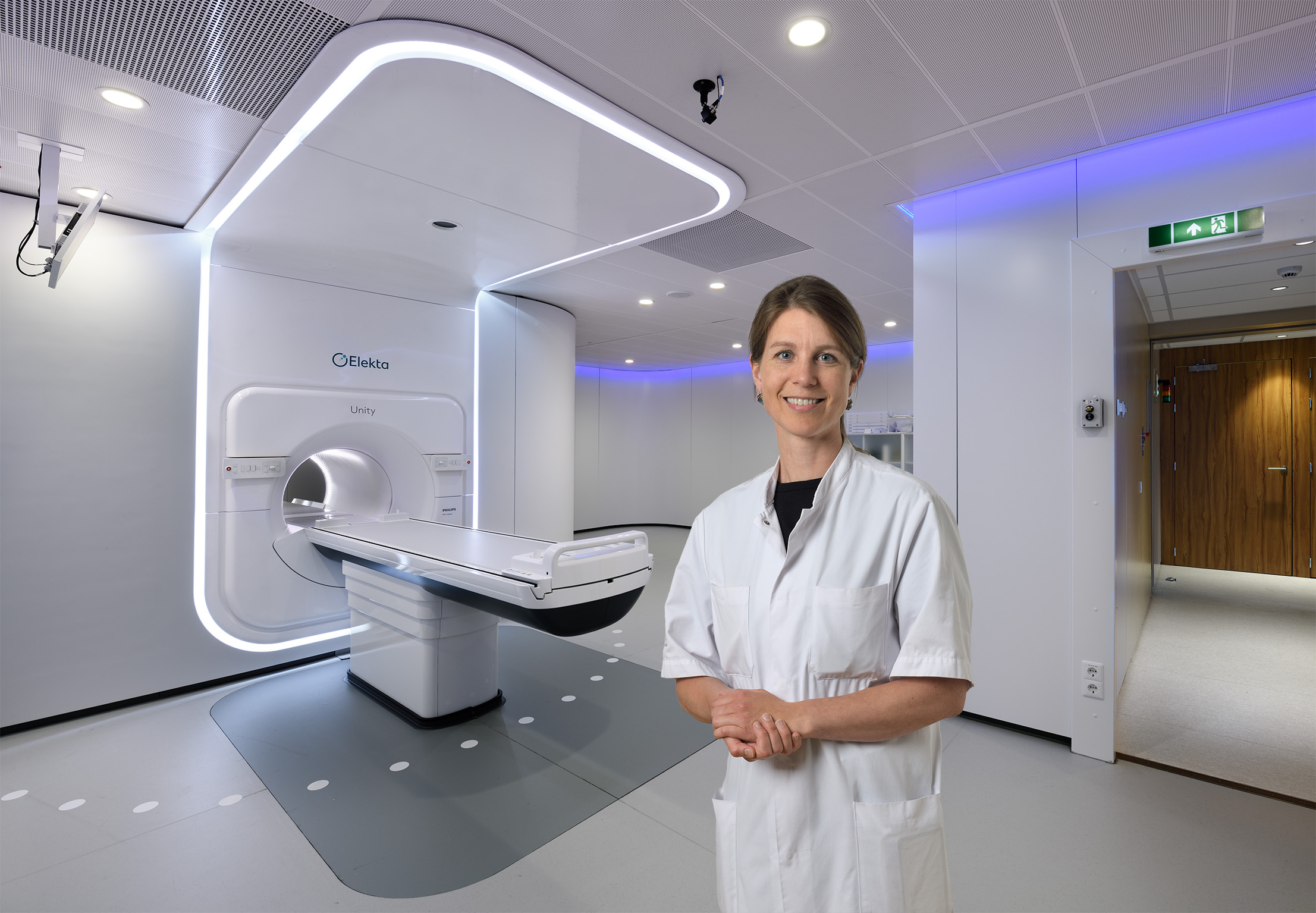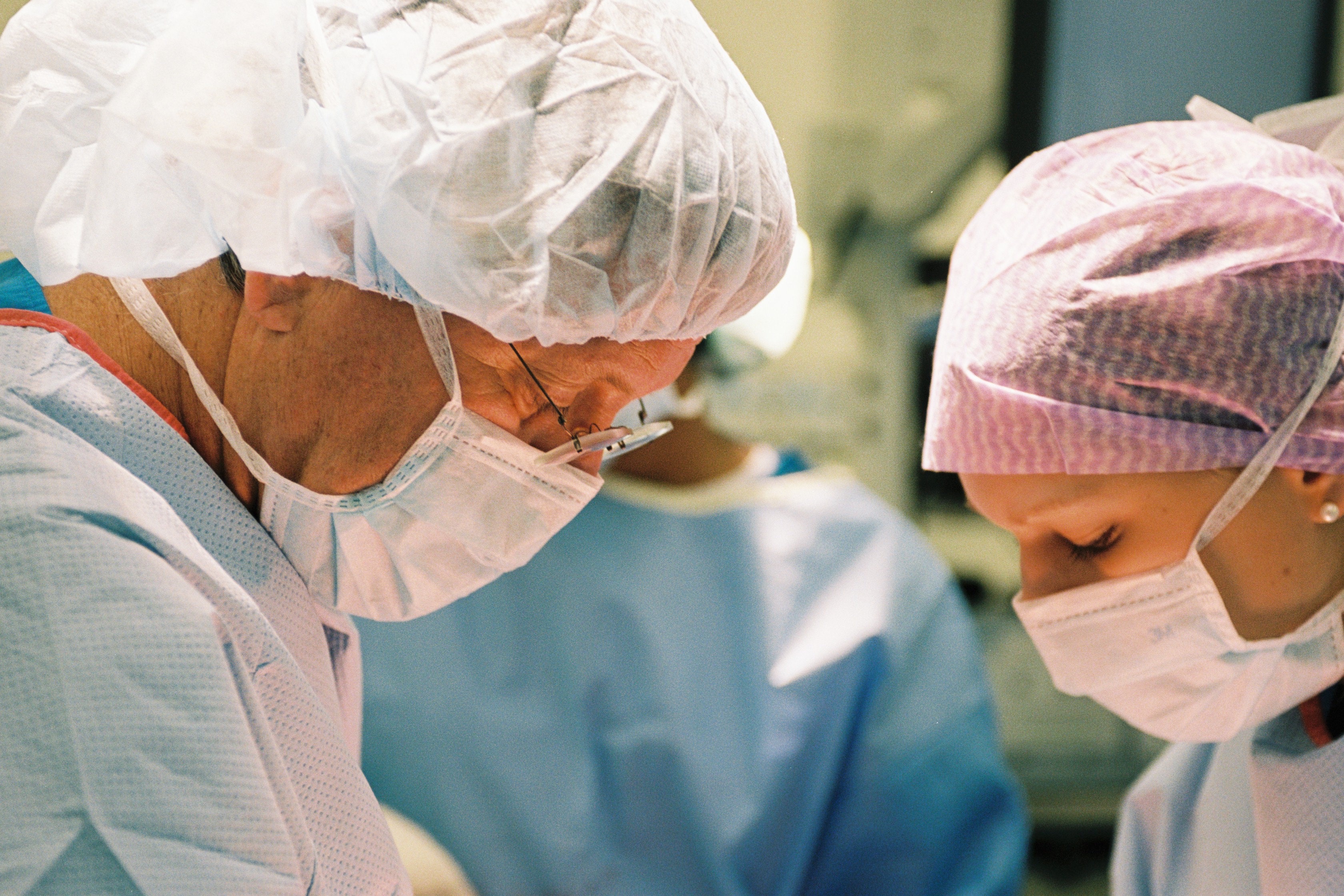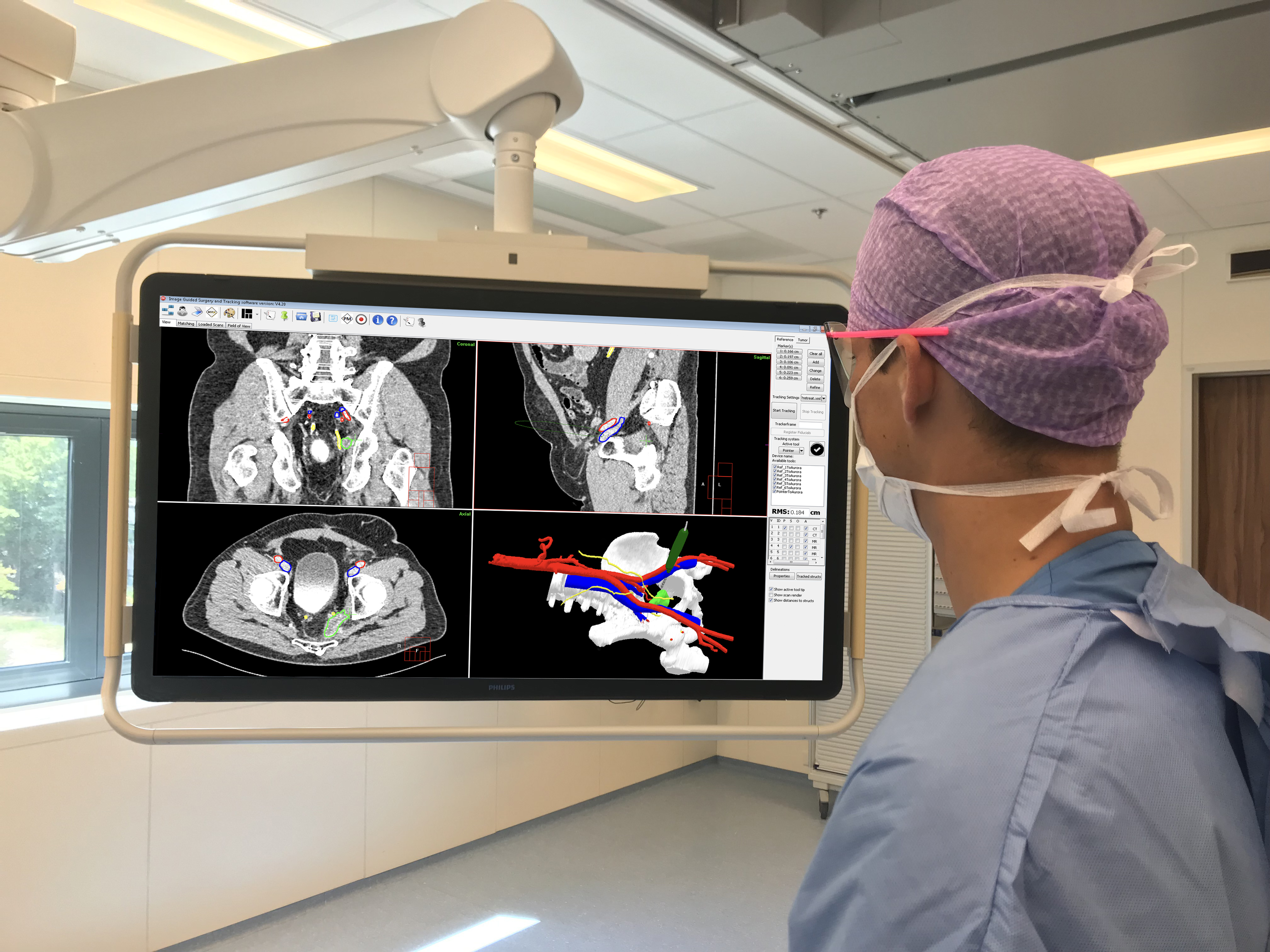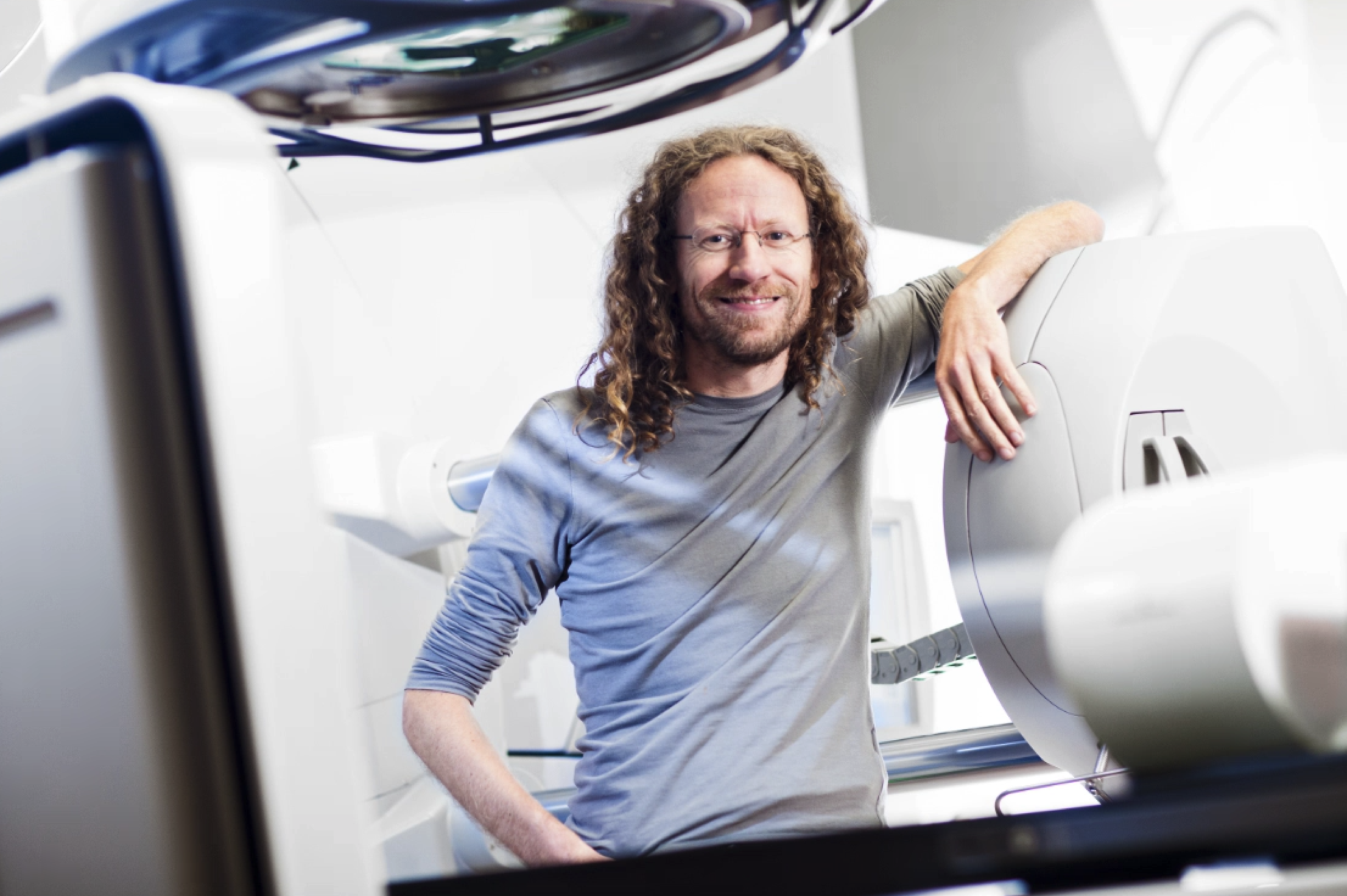How can we use (bio)medical images to treat patients as accurately as possible?
To operate and irradiate a tumor with great precision, surgeons and radiation oncologists need to know where exactly they can find the cancer cells. Physicians use several different medical scans that show them the tumor in relation to the rest of the body. But there are more possibilities. The location and shape of a tumor change in between treatments as well as during treatment like radiation or surgery. Tumors in the stomach and chest cavity move with every breath. And if a tumor shrinks as a result of treatment, or a patient loses weight, the radiation will need to be adapted. The Netherlands Cancer Institute researchers the various applications of medical imaging to better adapt treatment to the current situation of every individual patient.
Example projects





